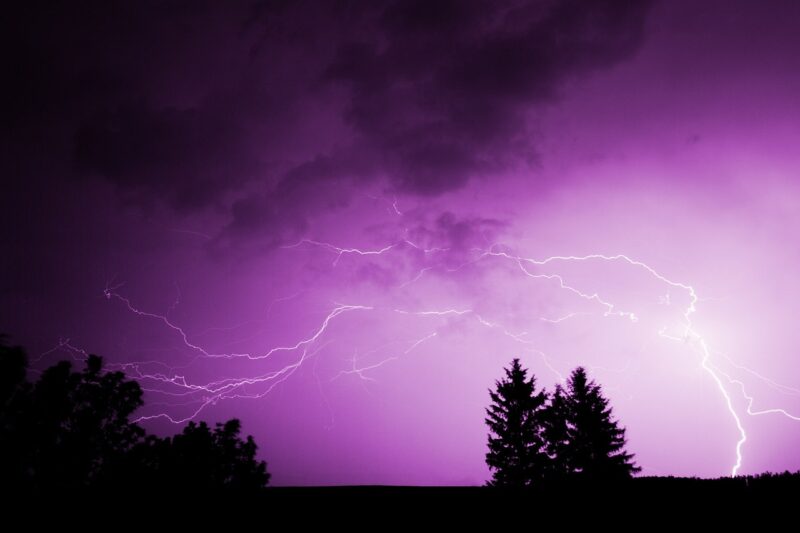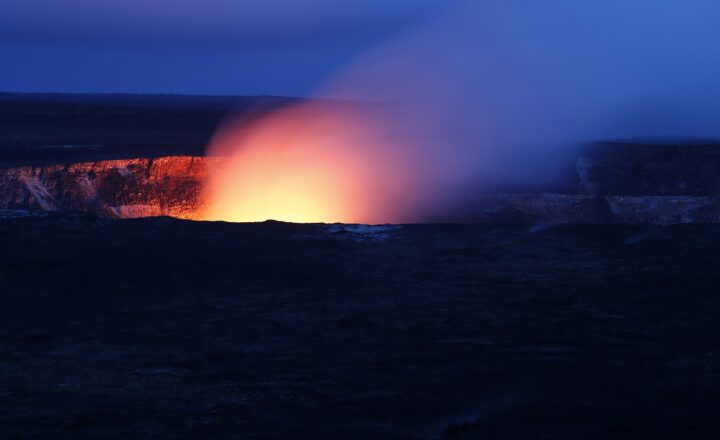
Lightning is one of nature’s most awe-inspiring phenomena, illuminating the sky with dazzling displays of energy and power. While many people have experienced the thrill of watching lightning strike, few truly understand the science behind this incredible natural event and its significant impact on our planet.
1. What is Lightning?
Lightning is a sudden electrostatic discharge that occurs during a thunderstorm, which produces a bright flash of light. This phenomenon can be described as a massive spark of electricity that occurs between clouds, between clouds and the ground, or within a single cloud. The energies involved in a lightning strike are staggering, often exceeding hundreds of millions of volts.
The process begins with the buildup of electrical charges in the atmosphere, primarily due to the collision of ice particles within a cloud, which causes the separation of positive and negative charges. Once the voltage between these charges becomes too high to be contained, it results in a lightning bolt.
2. Types of Lightning
Not all lightning is created equal. There are several types, each with unique characteristics:
- Cloud-to-Ground (CG): This is the most familiar type of lightning that strikes from the cloud to the Earth. It can be incredibly damaging and often causes wildfires, property damage, and even injury or death.
- Intra-Cloud (IC): This type of lightning occurs within a single cloud, creating bright flickers of light. It is responsible for the majority of lightning activity and often goes unnoticed from the ground.
- Cloud-to-Cloud (CC): This occurs between two separate clouds and usually produces a spectacular light show visible from the ground as a series of bright flashes connecting the clouds.
- Ground-to-Cloud (GC): A less common type, this occurs when the lightning begins from a grounded object and travels upwards to the clouds. This type commonly happens in tall structures and towers.
Each type of lightning has distinct behavior and implications for both the environment and human activity.
3. The Formation of Lightning
Understanding the formation of lightning involves diving into the world of atmospheric electricity. Here’s a simplified breakdown of the process:
- Charge Separation: Within thunderstorms, strong updrafts lift water droplets and ice particles into colder areas of the atmosphere, leading to a charge separation where lighter (positively charged) particles rise to the top and heavier (negatively charged) particles settle at the bottom.
- Voltage Build-Up: The stark difference in charges creates an electrical potential difference, with voltages reaching millions of volts in storm clouds. This build-up continues until it reaches a threshold point where discharge is necessary.
- Leader and Return Stroke: Once the threshold is reached, a leader connection is formed from the cloud towards the ground, creating a pathway for the charge to travel. The return stroke follows the leader, which is the bright flash we see as lightning strikes the ground.
This complex interplay of elements in our atmosphere underscores the sheer power and unpredictability of lightning.
4. Effects of Lightning on Earth
Lightning is not just a spectacle; it plays a crucial role in shaping our environment and ecosystem:
- Soil Fertility: Lightning has a remarkable ability to convert atmospheric nitrogen into forms that plants can utilize. This process, known as nitrogen fixation, enhances soil fertility and supports plant growth, making it essential for agricultural ecosystems.
- Wildfires: Lightning strikes are a significant natural cause of wildfires. When lightning hits dry vegetation, it can ignite a fire that quickly spreads, drastically altering landscapes and ecosystems but also serving to rejuvenate certain plant species adapted to fire.
- Geological Impact: The extreme heat generated by lightning strikes can cause soil to melt, creating a natural glass known as fulgurite. Fulgurites provide clues to the conditions present during a lightning strike and the interactions between earth and atmosphere.
- Creation of Thunderstorms: Lightning is critical in maintaining the electrical balance in the atmosphere, and it plays a role in the genesis and sustenance of thunderstorms, influencing local weather patterns and climate conditions.
These effects demonstrate how lightning transcends mere entertainment and is intertwined with Earth’s ecological and geological processes.
5. Human Interaction with Lightning
While lightning is a natural event, it has significant impacts on human activities and safety:
- Safety Measures: Lightning strikes result in an average of 20-30 fatalities annually in the United States alone. To mitigate risks, it is crucial for individuals to seek shelter during thunderstorms and avoid using electronic devices or plumbing, which can conduct electricity.
- Research and Monitoring: Advances in meteorology have improved our understanding and predictive capabilities related to lightning strikes. Researchers employ tools like lightning detection systems to monitor strike frequency and intensity, contributing to public safety and scientific knowledge.
- Harnessing Energy: The potential for harnessing lightning energy for practical use has been a topic of interest. Although challenges exist, lightning holds an immense amount of energy that, if captured, could theoretically contribute to renewable energy sources in the future.
The intersection of lightning and human activities continues to evolve as we deepen our understanding of this natural phenomenon.
6. Conclusion
Lightning is a stunning and potent phenomenon that illustrates the power of nature. It plays essential roles in ecology, geology, and weather systems. Understanding lightning not only enriches our appreciation of the natural world but also empowers individuals to take necessary precautions to safeguard against its dangers. As our knowledge of lightning continues to grow, so too does our capacity to coexist with this incredible force of nature.
Final Thoughts
The next time you see lightning illuminate the sky, remember it’s more than just a beautiful spectacle; it’s a complex, powerful phenomenon that impacts ecosystems and human lives alike. By deepening our understanding of lightning, we can better appreciate its role in our world and prepare ourselves for the storms ahead.







